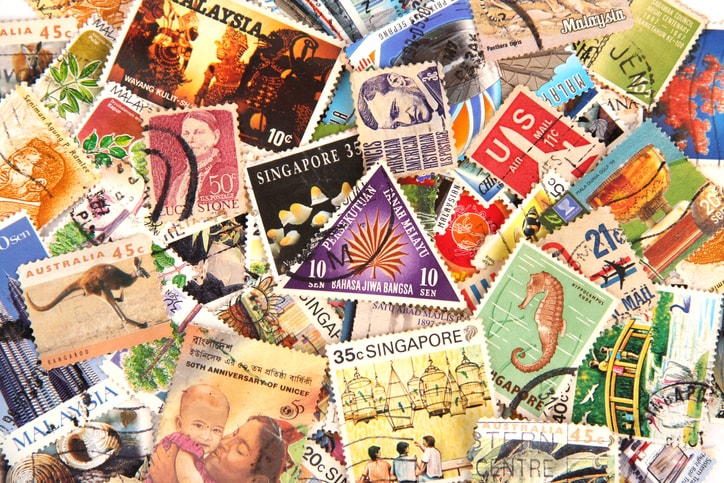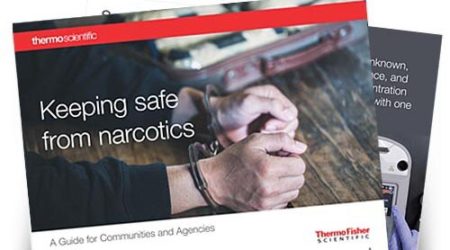 Millions of people and millions of goods pass through the island city-state of Singapore, off southern Malaysia. With countless parcels and packages of all sizes and shapes funneling through the sprawling Singapore Post Centre, the Immigration & Checkpoints Authority (ICA) is charged with a truly Herculean task; it is responsible for checking millions of parcels for drugs and other contraband. ICA does so using the most advanced and efficient technologies available. In the parcel post section, for example, ICA officers screen up to 20,000 postal articles for dangerous and prohibited items every day, according to a recent article in Channel News Asia. According to the article, ICA figures the “total number of articles cleared at the parcel post section each year has gone up from 5.2 million in 2016 to 6.1 million in 2018. In the same period, contraband cases detected annually increased from about 14,000 to almost 17,000.”
Millions of people and millions of goods pass through the island city-state of Singapore, off southern Malaysia. With countless parcels and packages of all sizes and shapes funneling through the sprawling Singapore Post Centre, the Immigration & Checkpoints Authority (ICA) is charged with a truly Herculean task; it is responsible for checking millions of parcels for drugs and other contraband. ICA does so using the most advanced and efficient technologies available. In the parcel post section, for example, ICA officers screen up to 20,000 postal articles for dangerous and prohibited items every day, according to a recent article in Channel News Asia. According to the article, ICA figures the “total number of articles cleared at the parcel post section each year has gone up from 5.2 million in 2016 to 6.1 million in 2018. In the same period, contraband cases detected annually increased from about 14,000 to almost 17,000.”
Every day of every year, everything contraband from drugs to weapons to drug paraphernalia are detected by alert screeners and sophisticated analyzers and sensors. Parcels are scanned, screened, and opened if suspicious items are detected, quite often through X-ray technology integrated into constantly-moving conveyor systems. The accuracy and comprehensiveness of the effort depend largely upon the skilled and trained X-ray system operators who know what to look for in the ghostly images. When drugs or drug paraphernalia are suspected and detected, they are referred to the Central Narcotics Bureau (CNB), which makes a determination as to the nature and disposition of the materials and may conduct further investigations.
There are various technologies used around the globe that enable officials to quickly identify deadly narcotics, like fentanyl and synthetic marijuana, entering borders from other countries. In the United States, CBP officers at the Chicago O’Hare International Mail Facility are using handheld narcotics analyzers, which are being credited for keeping CBP agents safe from exposure to deadly substances and helping ensure that such substances don’t reach the streets. The handheld chemical analyzer integrates dual technologies – Raman and FTIR – for orthogonal analysis of a broad range of potentially dangerous solid and liquid chemicals. By integrating both Raman and FTIR into a single analyzer, operators can utilize a broader range of chemical identification, providing complementary and confirmatory testing in a single, field-portable device. (We previously wrote how airports are using spectroscopy instruments for incoming drugs.)
While a great deal of attention is justifiably focused on illegal drug interdiction, another type of substance, radioactive materials and sources of radiation, i.e. radioactive isotopes, are also a focus of detection. Most radioactive products passing through customs are benign medical or industrial products, however products and substances intended for innocent purposes can also be used for purposes that are not innocent.
With radioactive isotopes, the types of radionuclides and their quantity or concentration become the issue that requires detection and identification of all of them that may be passing through a major international postal facility. A terrorist’s dirty bomb isn’t made from one small packet of an isotope intended for medical diagnostic instruments, but from a collection and concentration of certain classes of isotopes collected together in one place.
These are the reasons that everything passing through the Singapore Post Centre is also checked by the ICA for radiation. This is accomplished using handheld radiation isotope identifiers. These portable analyzers facilitate the scanning and checking of large bundles, pallets of products, or rooms full of goods for signs of unseen radioactive elements. The isotope identifier enables the officer to view the real-time spectra build of isotopes present in the environment (e.g., shipping container, pallet) as the identification scan is in process. Isotopes are color coded to visually alert the operator to the presence of isotopes and indicates the moment an accurate identification is made. To be the most effective, these detectors must be capable of not only determining that radiological material is present, but also what material it is. In this manner, then, an inspector can gauge whether or not the material is of low significance, or if the package needs to be opened and examined.
Singapore, known by many names including the ‘Lion City’, is truly a major world hub, home to more than 5 million people and a global financial center with a tropical climate and multicultural population. These material and radiation identifying technologies can not only help keep the Singapore population safe, but also help protect people all over the world by stopping potentially dangerous materials from being transported out of its port. And that’s worth roaring about.
Additional reading: Case Study – Tracking Radiation in the Lion City; Preventing ‘Dirty Bombs’ Elsewhere


Leave a Reply